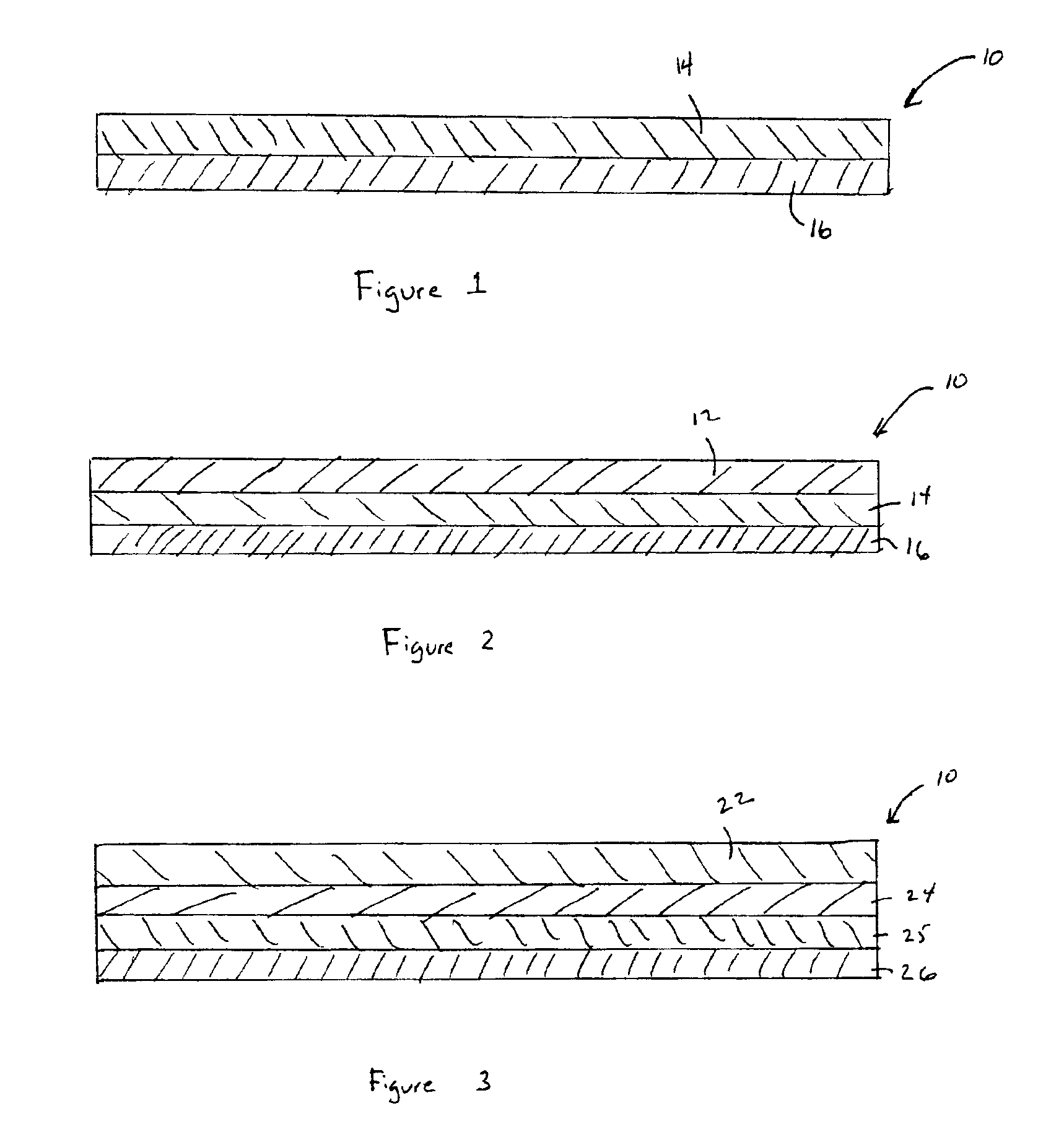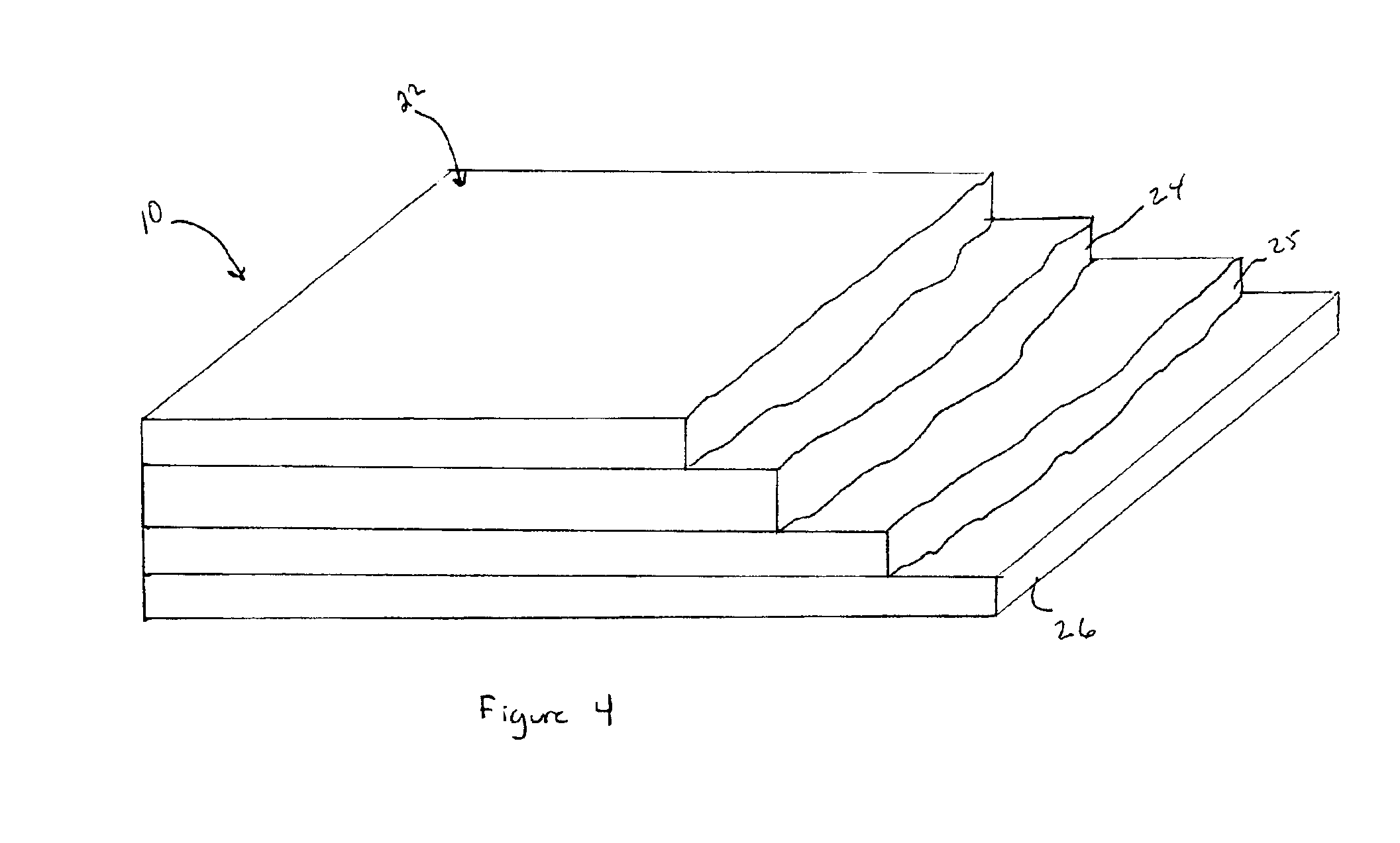Container, shelf and drawer liners providing absorbency and odor control
a technology of absorbent liner and shelf, applied in the field of absorbent liner, can solve the problems of difficult to remove stain or residue from the refrigerator shelf or drawer, trash receptacles also present problems with liquid clean up, and achieve the effect of increasing the effective surface area of odor control material
- Summary
- Abstract
- Description
- Claims
- Application Information
AI Technical Summary
Benefits of technology
Problems solved by technology
Method used
Image
Examples
example 1
[0085]Using the process describe in U.S. patent application Ser. No. 09 / 419,039, filed on Oct. 15, 1999, on a wettable polypropylene spunbond nonwoven fabric having a basis weight of 13.6 gsm (the liquid pervious layer) a first coform layer is formed. The first coform layer comprises 80% by weight pulp and 20% by weight polypropylene. A second coform layer comprising 60% by weight pulp and 40% by weight polypropylene and baking soda in an amount of 26 gsm is then formed on the first coform layer. The two layers of the coform material have a combined basis weight of 176 gsm, including the coform and backing soda. This three layer nonwoven web is then adhesively attached to a polyethylene film having a thickness of 1 mil. using a food grade adhesive. The polyethylene film is attached to the second coform layer which results in a four layer structure.
example 2
[0086]Using the process describe in U.S. patent application Ser. No. 09 / 419,039, filed on Oct. 15, 1999, on a wettable spunbond nonwoven fabric prepared from a side-by-side bicomponent fiber, wherein one component of the fiber is polyethylene and the other component is polypropylene, having a basis weight of 42.4 gsm and a pattern unbonded bond pattern (the liquid pervious layer), a first coform layer is formed. The first coform layer comprises 80% by weight pulp and 20% by weight polypropylene. A second coform layer comprising 50% by weight pulp and 50% by weight polypropylene and baking soda in an amount of 26 gsm is then formed on the first coform layer. The two layers of the coform material have a combined basis weight of 176 gsm, including the coform and backing soda. This three layer nonwoven web is then adhesively attached to a polyethylene film having a thickness of 1 mil. using a food grade adhesive. The polyethylene film is attached to the second coform layer which results...
PUM
| Property | Measurement | Unit |
|---|---|---|
| diameter | aaaaa | aaaaa |
| diameter | aaaaa | aaaaa |
| diameter | aaaaa | aaaaa |
Abstract
Description
Claims
Application Information
 Login to View More
Login to View More - R&D
- Intellectual Property
- Life Sciences
- Materials
- Tech Scout
- Unparalleled Data Quality
- Higher Quality Content
- 60% Fewer Hallucinations
Browse by: Latest US Patents, China's latest patents, Technical Efficacy Thesaurus, Application Domain, Technology Topic, Popular Technical Reports.
© 2025 PatSnap. All rights reserved.Legal|Privacy policy|Modern Slavery Act Transparency Statement|Sitemap|About US| Contact US: help@patsnap.com



